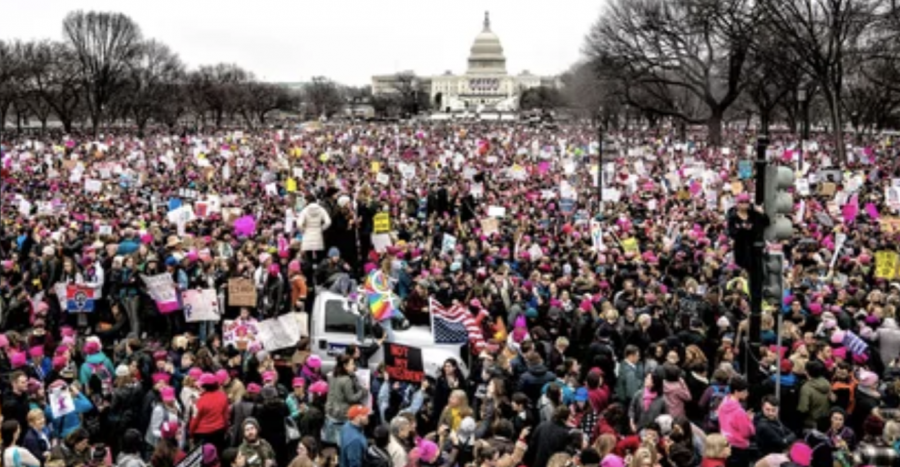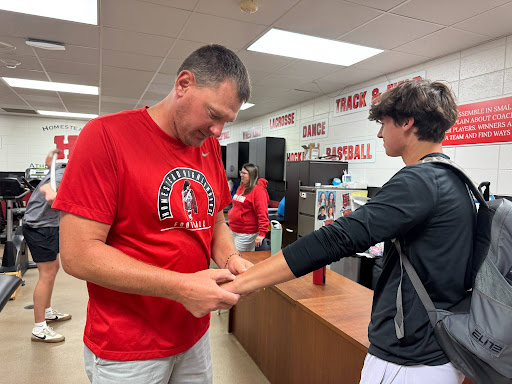A celebration of lesser-known female icons in honor of International Women’s Day
March 8, 2019 was International Women’s Day, a day to celebrate the empowerment of women across the globe from all walks of life. Whether the celebration of this day came in the form of participating in marches, liking female-positive photos on Instagram and empowering tweets on Twitter, or taking the time to truly acknowledge the emboldened females, one of the best ways to celebrate what the future holds for the roles of women in society is to take a look at the past.
Most people have heard of such women’s rights icons as Malala Yousafzai, Eleanor Roosevelt, Maya Angelou or Hillary Clinton, all of whom were, and are, inspiring women who have taken incredible risks in order to further female empowerment and the rights and roles of women in society. However, in order to fully acknowledge the complex history of women, it is important to acknowledge the icons who have largely been excluded from social studies textbooks and core curriculum. Below is a list of four women who have made major contributions to society, by making their voices heard and following their goals and passions, which has allowed for generations of women to do the same.
Rachel Carson
The author of numerous publications and an environmentalist icon, Rachel Carson brought environmental conservation discussions to the dinner table. Born in 1907, Carson received a full college education, earning a master’s degree in Zoology, that would later prove useful throughout her career. The second woman hired by the US Bureau of Fisheries, Carson produced many environmental writings for the agency, later becoming Editor in Chief.
Carson is most widely known for her 1962 novel Silent Spring, which received both widespread acclaim and attack. The work criticized the use of pesticides, citing negative impacts on both the environment and the possible harms to humans, while also accusing the pesticide industry of spreading misinformation to the people. Though it faced backlash from the chemical companies which it attacked, the information in the book was backed by scientists and, later, John F. Kennedy’s Science Advisory Committee.
Whether you agree or disagree with Carson’s work, the immense impact it had on the scientific and public view is too large to ignore. Her publication not only lead to the ban of certain types of pesticides and was one of the core developments that spurred the creation of the US Environmental Protection Agency, but it also sparked a larger environmental movement and brought conservation to the forefront of the international dialogue. She also made herself a prominent female name in the scientific world, encouraging other women to pursue such careers and express their viewpoints, no matter how radical they may seem at the time.
Victoria Woodhull
Before there was Hillary Clinton’s 2008 and 2016 presidential campaigns, there was Victoria Woodhull’s. Born in 1838, Woodhull spent most of her childhood enamored with spiritual entities, claiming to at times of been transported to an alternate world. Working as a medium, she later moved on to other business ventures, including taking to Wall Street and becoming the first woman ever to own a brokerage firm. From there, she became the first woman to start a weekly newspaper.
Throughout these ventures, she was a prominent Women’s Rights Advocate. One of the largest platforms she pushed was the idea of “free love”, which supported a woman’s right to marriage and divorce. She also at the helm of the women’s suffrage movement and, in 1971, announced her candidacy for president.
Though the legitimacy of her candidacy was, and is, largely debated due to a myriad of seemingly disqualifying factors, the larger idea behind the blurred details was that a woman, who at the time could not even vote, ran for a position of power when the position of women in society was still largely suppressed. She brought women’s issues into the limelight, helping to further the suffrage movement and other women’s empowerment agendas. A female in a leadership role was not such an inconceivable notion, and her actions became a catalyst for women to continue pressing forward and bringing their ideas and perspectives into office.
Valentina Tereshkova
Born in 1937, Valentina Tereshkova proved that women are not only fully capable of doing any earthly job the world has to offer, but any job beyond. Inspired by the first man to land in space, Yuri Gagarin, and due to the desire for a woman to be sent into orbit, Tereshkova volunteered for the cosmonaut program in Russia, and was accepted due to her extensive background in parachuting. Following eighteen months of training, Tereshkova was the only women of the five who volunteered to be selected for flight.
Piloting Vostok 6, Tereshkova orbited the Earth 48 times, spending a total of three hours in space. This merited her the title of the first woman ever in space. Though she never again went up into orbit following this experience, she did serve many other roles, including being a test pilot, mother, and deputy to the Supreme Soviet.
Tereshkova’s accomplishments demonstrated that a woman could achieve just the same feats as a man could. Her tireless training and dedication showed a fierce determination that inspired many other women to follow down similar paths. And, just as space exploration has developed, the role of women in the history of space travel has developed with it, which can in part be accredited to the first woman who dared to dream.
Nellie Bly
An accomplished journalist and, arguably, the mother of investigative journalism, Nellie Bly was born in 1864. Though she began her journalistic career writing in a woman’s column, she quickly developed interest in wanting to cover bigger stories, outside of what the traditional female journalist at the time was expected to cover. Her first of these more prominent articles was about the experience of living in Mexico for many months.
After leaving her hometown for New York City, Bly, while working for the New York World, feigned a mental illness for ten days in order to experience the conditions of a patient at what was then the asylum on Blackwell’s Island. This lead to her publishing the details of her stay in Ten Days in a Mad House, which quickly built a name for Bly. Shortly thereafter, after being inspired by the novel Around the World in 80 Days, Bly decided to take her own trip, which lasted a mere 72 days, shattering what was then regarded as the record.
Bly’s Ten Days in a Mad House publication was not only riveting, but also developed into the genre of writing today known as investigative journalism, begun by a woman who, at every turn, seemed to say, “No, I want more.” Her works not only put her name on the byline of a major publication at the time, but even larger the name of a woman. She proved that women were fully capable of taking on any challenge that could be thrown at them, and encouraged other women to follow suit by unapologetically pushing for larger roles in whatever job she took on.
This concludes the list of a few prominent, yet lesser-known, icons of women’s rights lying within the fabrics of history. These were women who broke boundaries and completely, unapologetically, shattered glass ceiling after glass ceiling, paving the way for the women who would follow them to not allow for any of their aspirations or goals to be restrained by the fact that they are a woman, but to flourish due to being a proud female.
However, International Women’s Day should not only be a day to admire the icons, past and present, who make up the women’s rights movement, but also every woman in your life who have pursued their goals and passions not in spite of being a woman, but because they are an empowered woman. From the woman you pass on the street to the women that are your bosses, coworkers, and peers, to your sister and your mother, these are all the women that make up the movement, and are all the faces that should be celebrated.

Alexandra Grosso is a junior at Homestead who was been writing for the Highlander Online for the past three years. She is best known for her articles on...






